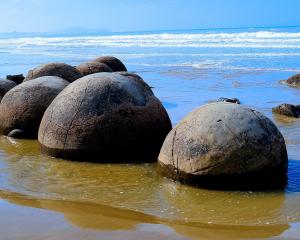
Unique to the Waitaki catchment, nationally endangered lowland longjaw galaxias are short — growing up to 80mm — and skinny, and have a long lower jaw and underbite.
They are only found in five tributaries in the Waitaki catchment in a handful of side channels and small springs, Department of Conservation senior biodiversity ranger Dean Nelson said.
"They’re holding on thanks to the placement of exclusion barriers, in consultation with local rūnanga and Fish & Game, that prevent predators like trout and kōaro moving upstream to eat them. Management of invasive weeds is also helping."
But there was dismay when a research team of Doc staff and a PhD student found only a handful of longjaws in a small tributary of Corbies Creek, which is normally a population stronghold.
"In January 2023, we found just under a 100 longjaws in a 25sq m area of this small stream, but earlier this month, only 12 were found in the same area," Mr Nelson said.
"This small but important longjaw population was on the brink of a local extinction.
"Fortunately, on the same day we observed the steep decline in this population, we also found the cause — two brown trout upstream of a trout exclusion barrier.
"It was the first time in several years of monitoring that a breach had occurred.

The near miss highlighted the value of frequently monitoring the small, fragmented populations of these rare fish, even when exclusion barriers are in place.
"Extreme weather events increase the risk of exclusion barrier breaches.
"Removing the two trout saved the Corbies Creek lowland longjaw population from a likely extinction within the next few months."
Local Doc staff will do further checks soon to ensure the absence of trout in the Corbies Creek lowland longjaw habitat.
Regular monitoring will continue long term, along with other management such as aquatic weed control to sustain crucial habitats for these little fish.
There were several immediate ways that people could help to protect longjaws, Mr Nelson said.
"Raising awareness could make a big difference for this unique, amazing fish, as they’re not so well-known, in the world of galaxiids.
"Longjaws’ prospects will also improve by protecting the Waitaki catchment’s springs and side channels, preventing changes to flows, managing aquatic weed invasions, limiting stock access, and reducing runoff of nutrients such as phosphorus and nitrogen."












